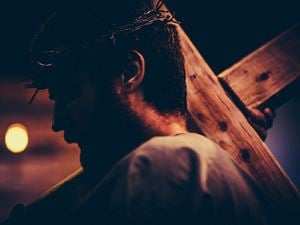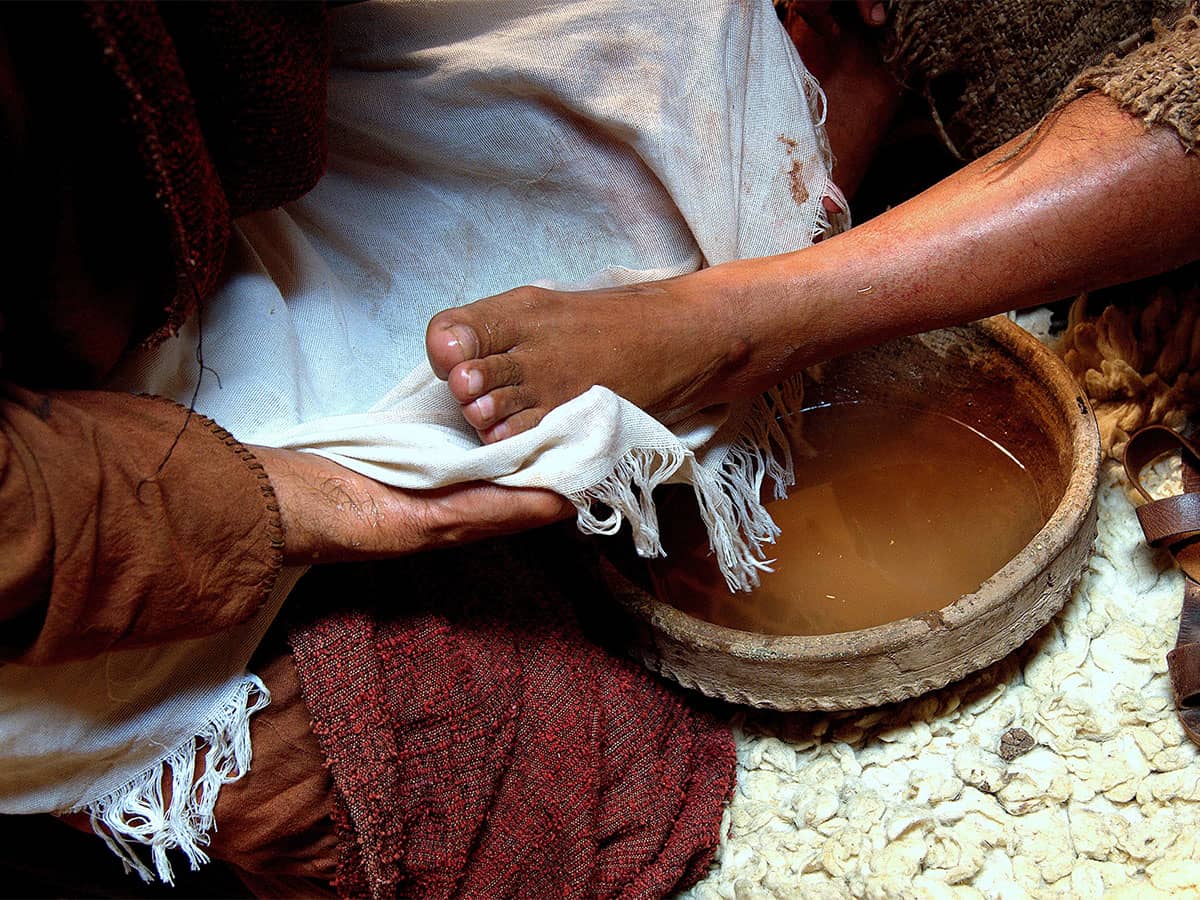
Those who had arrested Jesus took Him to the house of the high priest Caiaphas, where the teachers of law and the elders gathered. Peter followed from a distance as far as the courtyard of Caiaphas’ house. The Jewish leaders were seeking false evidence against Jesus to have Him put to death, but they couldn’t find any. Eventually, Caiaphas demanded Jesus to tell them if He was the Messiah or the Son of God.
Jesus said, “So you say. But I tell all of you, from this time on, you’ll see the Son of God at the right side of the Almighty and coming from heaven’s clouds.” Caiaphas declared that this was blasphemy, so a guilty verdict was given. Then, they spat in Jesus’ face and beat Him.
What was Jesus accused of before His crucifixion?
There were several reasons why Jewish leaders wanted Jesus put to death. Jesus called them hypocrites and challenged their authority, broke their laws about Sabbath observance, spent time with people the Jewish leaders regarded as “unfit,” like prostitutes, tax collectors, and sinners, and Jesus made claims about Himself that the Jewish leaders couldn’t accept, primarily that He was God’s Son and the prophesized Savior. The Jewish leaders accused Jesus of blasphemy. Blasphemy is a religious offense when someone says or does something regarded as being disrespectful to God. In the Jewish leaders’ eyes, when Jesus asserted to be God’s Son, He was insulting God.
Blasphemy was a serious crime, and the punishment was death by stoning. After Jesus was arrested, He was put on trial by the Sanhedrin, the highest ruling council of the Jews. There were 70 members, mainly consisting of Pharisees, Sadducees, and priests, plus the leader, who was the high priest, or in this case, Caiaphas. The Sanhedrin were still allowed to exist under Roman rule, but they had limited power. They could find someone guilty and give the death sentence, but they couldn’t carry it out because only the Romans could put a person to death. The Sanhedrin had a number of rules in place regarding the conduct of their trials. For example, a trial couldn’t happen during an important festival or at night.
Also, the death penalty couldn’t be passed immediately if someone was found guilty, and the Sanhedrin had to wait overnight to pass the sentence. All trials took place in the Hall of Hewn Stones, the official place for trials in the temple. Two or three witnesses were required, and they had to agree on every detail. Anyone who gave false evidence would receive the same punishment as the person on trial. Jesus was arrested late Thursday night after the Passover meal. He immediately appeared before the Sanhedrin as the Jewish leaders wanted Him tried as quickly as possible.
Did Jesus get a fair trial?
In their rush, the Sanhedrin doesn’t seem to be concerned about a fair trial. They’re trying to find false evidence, and false witnesses came forward, misquoting Jesus’ words and accusing Him of threatening to destroy the temple. This could’ve been a distortion of Jesus’ teachings about the resurrection when He said His body would be raised in three days. Jesus stayed silent, which again fulfilled the Old Testament prophecy about the Messiah.
Finally, Caiaphas asks Jesus if He is the Son of God, to which He replies, “So you say.” This response was enough for the high priest to accuse Jesus of blasphemy. Caiaphas tore his clothes to show his shock at hearing blasphemy, a custom among very self-righteous Jews. The death sentence was then passed immediately on Jesus, hitting Him and spitting in His face. Now that Jewish leaders had found Jesus guilty of blasphemy, they took him to Pontius Pilate, the Roman Governor.
With Palestine being an occupied country, only the Romans can put someone to death, which explains why Jesus had to have two trials. The Sanhedrin found Jesus guilty of the religious offense of blasphemy, which would be of no interest to the Romans. Therefore, the Jewish leaders had to switch the charge against Jesus from alleging to be the Son of God to saying He was the King of the Jews. In doing so, they emphasize the political rather than religious implications of asserting to be the Messiah. The Romans took action for a political offense, particularly something that threatened Roman rule.
What happened after Jesus’ trial?
Pilate’s soldiers took Jesus to the governor’s palace, where they stripped Him of His clothes and put a crimson robe on Him. Then, they made a crown out of thorny branches and put it on His head and put a stick on His right hand. They knelt before Him, mocking Him and saying, “Long live the King of the Jews!” They hit Him over the head with a stick and spat at Him. Then, they led Him out to crucify Him.
Simon from Cyrene was forced to carry Jesus’ cross, and they came to a place called Golgotha, which means the place of the skull. There, they offered Him wine mixed with a bitter substance. After tasting it, Jesus wouldn’t drink it. They crucified Jesus and distributed His clothes among them by throwing dice. Above His head, they put a sign that read, “This is Jesus, the King of Jews.” Then, they crucified Jesus with two bandits. People passing by threw insults at Jesus, and the chief priests, teachers of the law and elders made fun of him. They said, how can He save others but not Himself? Even the two thieves who’d been crucified with Jesus insulted Him.
Christians believe that Jesus’ death on the cross wasn’t an ordinary death. It can be compared to a sacrifice, and Jesus was punished for all the things that sinful humanity had done wrong so they could receive God’s forgiveness. Jesus died to save humanity from sin’s consequences, to restore humans to a relationship with God, and because no one else was willing or could pay the price for the sin of the entire world.

